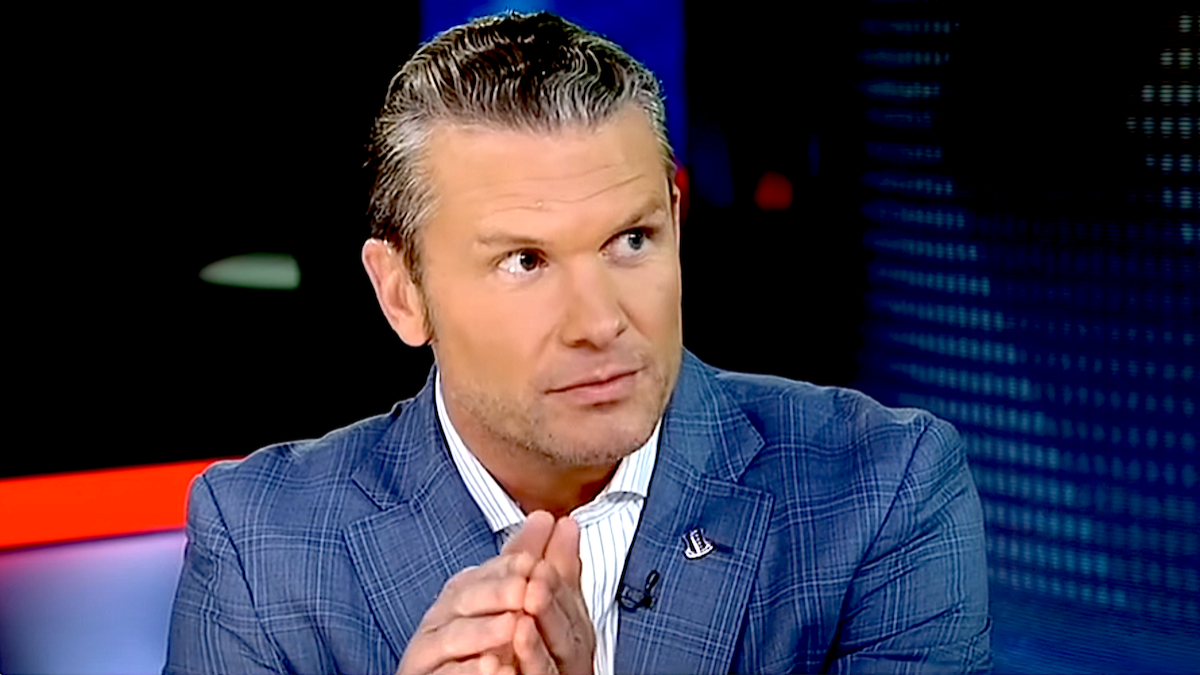
Jay Michaelson’s recent essay “What Does the Bible Teach About Transgender People?” was written in response to a resolution on human sexual identity I submitted at the Republican State Meeting in Kansas. Despite his claims, the resolution is not a “theological document.” However, it does rely on some fundamental biblical principles, and I’m glad to respond to Michaelson in greater theological detail.
Michaelson begins by attacking the basic theological principle on which the resolution is grounded: God’s design for gender as determined by biological sex. He insists, “Definitionally [sic], sex is about chromosomes; gender is about cultural practices. Sex is what is between our legs; gender is what is between our ears.”
There is no biblical support for this distinction. God’s design for two, distinct sexes is reaffirmed in his covenant with his chosen people, which explicitly prohibits cross-dressing: “A woman shall not wear a man’s garment, nor shall a man put on a woman’s cloak, for whoever does these things is an abomination to the LORD your God” (Deut. 22:5).
It’s true Christians are no longer under the Old Testament law, yet we see God’s plan for the sexes reaffirmed by Paul in Ephesians 5 and Jesus in Matthew 19. The law is fulfilled, but the reason behind the law remains.
Liking to Cook Doesn’t Make Someone a Woman
Michaelson defends this distinction between sex and gender by building a theology based on biblical examples of people who seem to defy traditional gender norms. His most creative example is Jacob: “(Jacob) is clearly gendered female in comparison with his twin brother Esau. Esau is hairy, Jacob is smooth; Esau is a hunter, Jacob ‘stays in the tent’ (which is where women stay) and cooks; Esau is favored by his father, Jacob by his mom… the way the Bible constructs his gender identity makes it very clear that… he is gender non-conforming.”
Yes, Esau is a jock and Jacob is a momma’s boy. This doesn’t mean that Jacob is “gender non-conforming.” In fact, scripture explicitly rejects Michaelson’s shallow understanding of masculinity as based on behavior and appearance. When the people of Israel clamor for a king, they choose Saul. Why? Because he looked like a king. “There was not a man among the people of Israel more handsome than he. From his shoulders upward he was taller than any of the people” (1 Samuel 9).
It didn’t work out well. Later, the Lord says of Saul, “Do not look on his appearances or on the height of his stature, because I have rejected him. For the Lord sees not as man sees: man looks on the outward appearance, but the Lord looks on the heart,” (1 Samuel 16:7). Then Samuel anoints David king. David is the youngest of Jesse’s eight sons and a musician — not exactly how his people expected a king to look.
What a Man Looks Like to God
For a biblical model of masculinity, we can look to 1 Timothy 3:1-7. Here Paul describes in detail the characteristics that qualify men for leadership in the church. “Therefore an overseer must be above reproach, the husband of one wife, sober-minded, self-controlled, respectable, hospitable, able to teach, not a drunkard, not violent but gentle, not quarrelsome, not a lover of money. He must manage his own household well, with all dignity, keeping his children submissive, for if someone does not know how to manage his own household, how will he care for God’s church?” (1 Timothy 3:1-5).
For the critical job of shepherding his church, God is not looking for men who have back hair and like to hunt. He is looking for men who are faithful, have integrity, practice self-control, are temperate, and who love their wives and kids.
Certain traits tend to be associated with one sex or the other. Men tend to be bigger, stronger, and hairier than women. Women tend to invest more time tending to interpersonal relationships than men do. There is a spectrum in these associations, with some men more relational and some women more athletic. This should not drive us to throw out the idea of gender norms, but rather to worship a God who makes each person unique.
God ‘Made them Male and Female’
Neither should the “rainbow of variation,” as Michaelson describes it, cause us to lose sight of the scientific facts about male and female. Men have a penis and testicles. Male sexual anatomy developed in utero because of their XY genotype. Women have a vagina and fallopian tubes, which derive from their XX genotype. The male system is designed to complement the female system for sexual reproduction. Scientifically, this is what it means to be a man and woman.
God affirms this fundamental aspect of his plan for human sexual identity when he instructs Adam and Eve, “Be fruitful and multiply; fill the earth,” (Genesis 1:28).
Yes, there are deviations from this objective standard (e.g., ambiguous genitalia, hormone levels, chromosomal composition). At best, such occurrences have a tenuous connection to transgenderism. Remember, for proponents of transgenderism, what matters is what is “between a person’s ears.” No physical, genetic, or hormonal difference is a precondition for embracing a gender identity that differs from one’s sex.
Michaelson writes, “Societally, we recognize and affirm the dignity of every human being when we respect their profound sense of self-understanding – echoed by science, culture, and history.” This is not what the Bible teaches.
The dignity of every human being is not ground in his or her self-understanding, but in his or her identity as a being created in the image of God. The wonderful irony at the heart of the gospel is the futility of self-understanding, and the fullness of life that comes from yielding to the lordship of Christ. Jesus tells us, “Whoever finds his life will lose it, and whoever loses his life for my sake will find it” (Matthew 10:39).
Michaelson ends his essay with a plea to care about the pain, suffering, and stigma transgender people experience. On this point, he is absolutely correct. That’s why it’s necessary for those who know the truth to speak.
Gender dysphoria and other, similar experiences are real, and demand the careful, compassionate attention of medical and mental health professionals prepared to walk with sufferers on a path to wellbeing. Their lives matter too much to be sacrificed to the idol of a political agenda.









